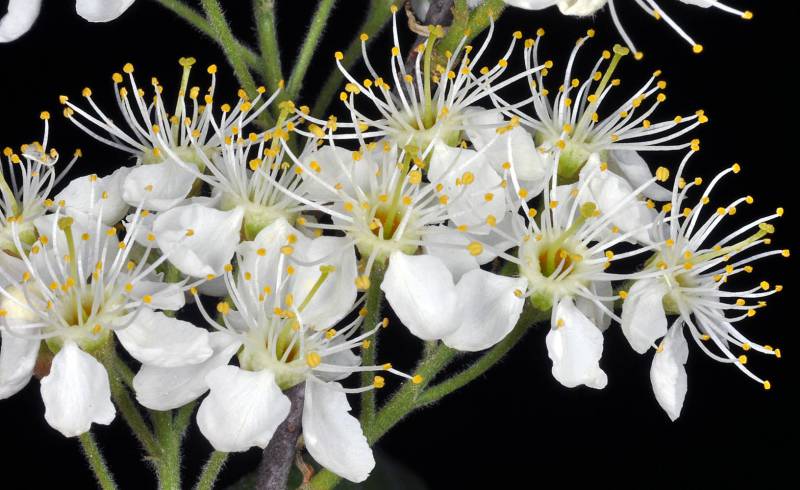Prunus persica
Prunus emarginata
peach
bitter cherry
Leaves alternate, the blades elliptic to oblong or obovate, finely serrate, 3-8 cm. long, with petioles 5-12 mm. long.
Inflorescence a few-flowered, flat-topped raceme;
calyx cup-shaped, the 5 oblong-lanceolate lobes 2.5-3.5 mm. long;
petals 5, white, obovate, 5-7 mm. long, pubescent on the lower surface;
stamens about 20;
pistil 1.
Drupe dark red to nearly black, 8-12 mm. long, very bitter.
Prunus persica
Prunus emarginata
Occurring in scattered locations on both sides of the Cascades crest in Washington; southwestern British Columbia to California, east to Idaho; also in eastern North America.
Occurring on both sides of the Cascades crest in Washington; British Columbia to California, east to the Rocky Mountains.
- Local floras:
BC,
CA,
OR,
WA
- Local Web sites:
CalFlora,
CalPhotos,
Flora NW,
PNW Herbaria
WildflowerSearch
iNaturalist (observations)
USDA Plants Database
- LBJ Wildflower Center
- SEINet
- Plants of the World Online
- Encyclopedia of Life
- Wikipedia
- Google Image Search
- Local floras:
BC,
CA,
OR,
WA
- Local Web sites:
CalFlora,
CalPhotos,
Flora NW,
PNW Herbaria,
Turner Photog.
WildflowerSearch
iNaturalist (observations)
USDA Plants Database
- LBJ Wildflower Center
- SEINet
- Plants of the World Online
- Encyclopedia of Life
- Wikipedia
- Google Image Search



